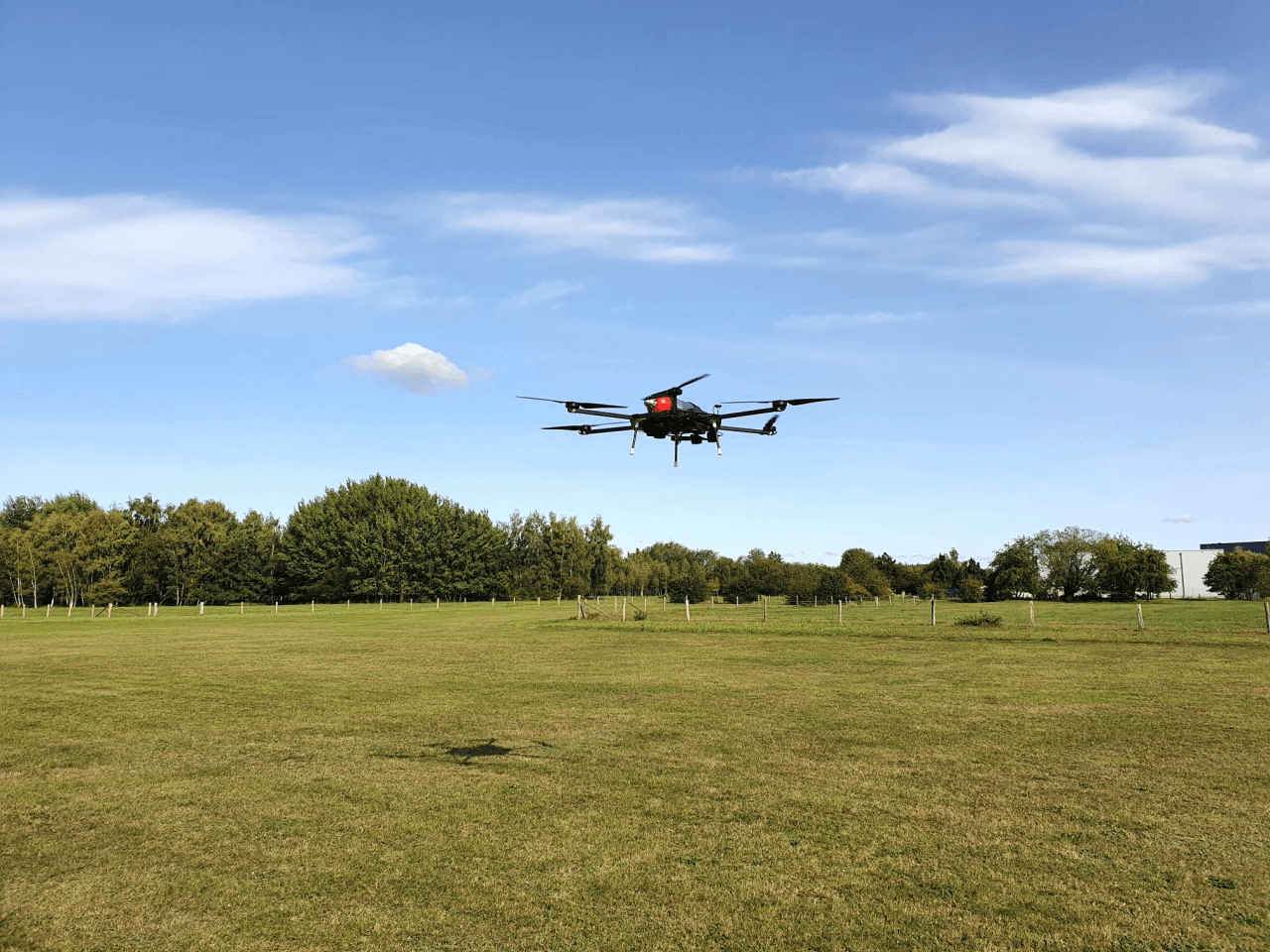A model airfield in the middle of the countryside near Stade. But what takes off here today is not a model airplane of enthusiastic hobbyists… It is a drone, but a very special one!
We need new solutions to make modern mobility more sustainable. This applies especially to aviation. Experts are thus developing new engine concepts and making them ready for series production. To do so, they must at the same time increase technical performance and keep an eye on cost-effectiveness. The focus is always on hydrogen as a solution (and not just since the latest press releases from Airbus). Fuel cells are used to turn it into electrical energy. This is also the case with the ZALbatros…
It’s a bird, it’s a plane – it’s ZALbatros!
The hexacopter ZALbatros is a research and development platform of ZAL GmbH. It has a total of six engines powered by two fuel cell systems with 800 W continuous power each. A central tank carries the hydrogen with a maximum of 300 bar. When the rotors are running, the diameter is over 2.1 m. Thanks to the weight-optimized design, the take-off weight is only a little over 12 kg despite the size. The carbon fiber fuselage structure provides the necessary mechanical stability.
Longer flight times thanks to higher energy density
A major goal is to significantly increase the maximum flight time. We achieve this by raising the amount of energy carried on board, which we use for propulsion. The fuel cells with pressure storage used here have a much higher energy density compared to conventional batteries. This means that the required amount of energy can be carried without the weight becoming too great.
Track record: ZALbatros flies two hours and ten minutes
In August the first test flights in closed rooms showed – the ZALbatros flies! During the second flight test at the model airfield in Stade, our hexacopter achieved a total flight time of two hours and ten minutes. And this with partly gusty winds. Battery-powered drones often have to land again after just over half an hour to charge or change the batteries. With the help of various sensors onboard, we track the condition of the ZALbatros in the air. We measure the power consumption of the engines, the operating temperature of the fuel cells, the signal strength of the radio signal, and the tank pressure. The latter provides information about the remaining flight time.
Application area ZALbatros
The integration of several technological departments of ZAL results in a wide range of possible uses. Besides to inspection and transport tasks, we can also use our drone for testing components manufactured with novel production processes.
You would like to see the ZALbatros in action? Click here for the video.





